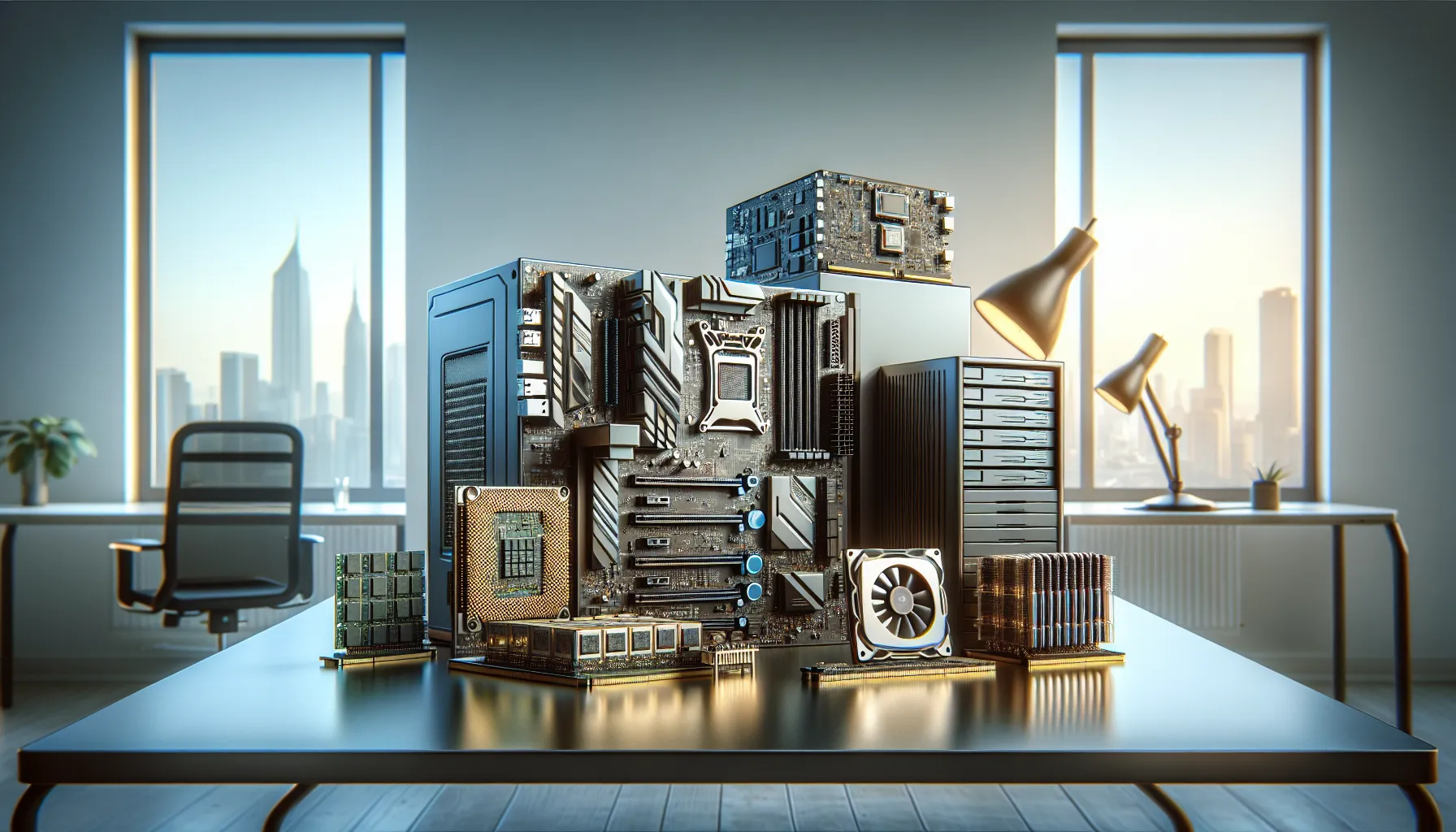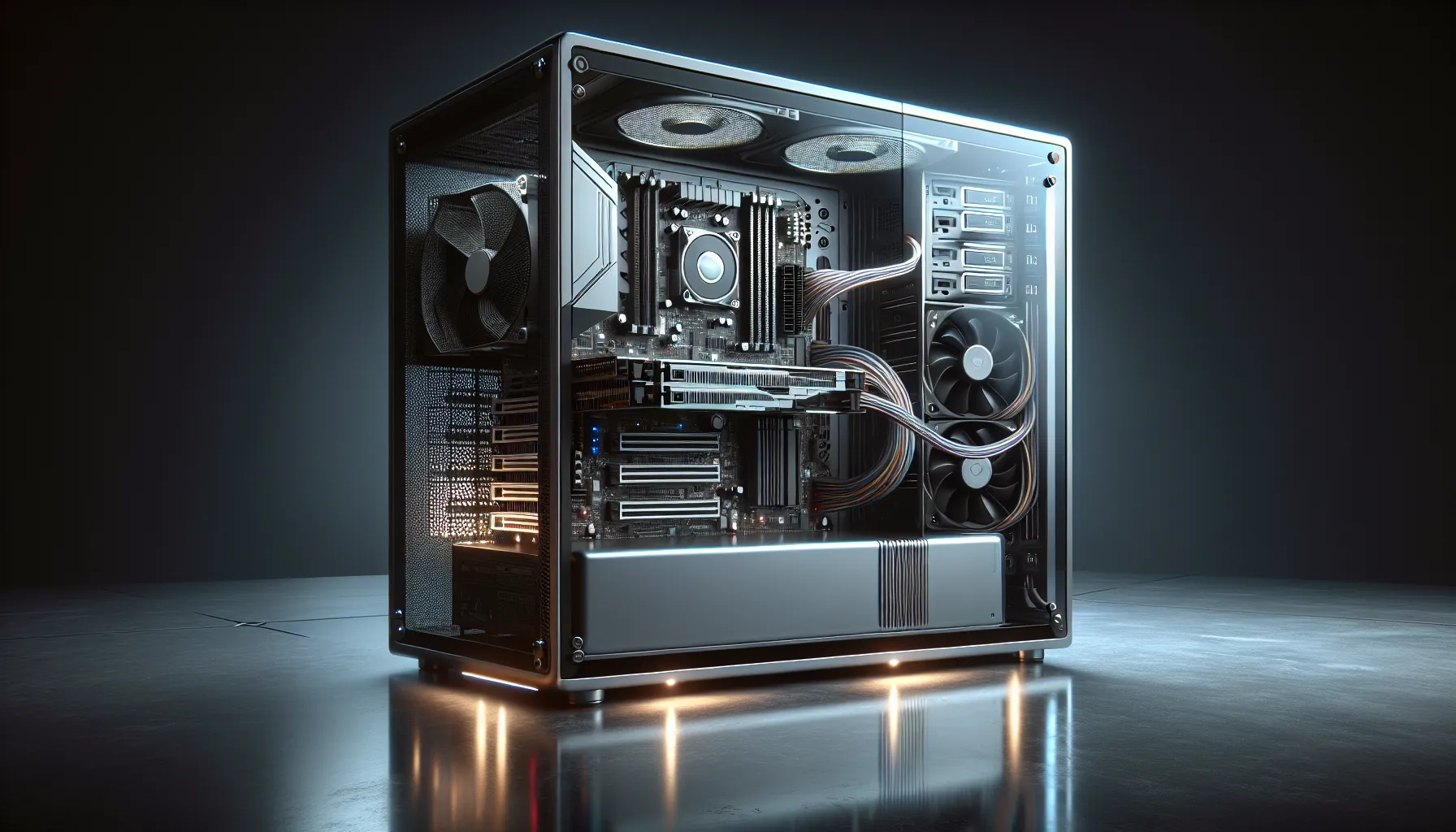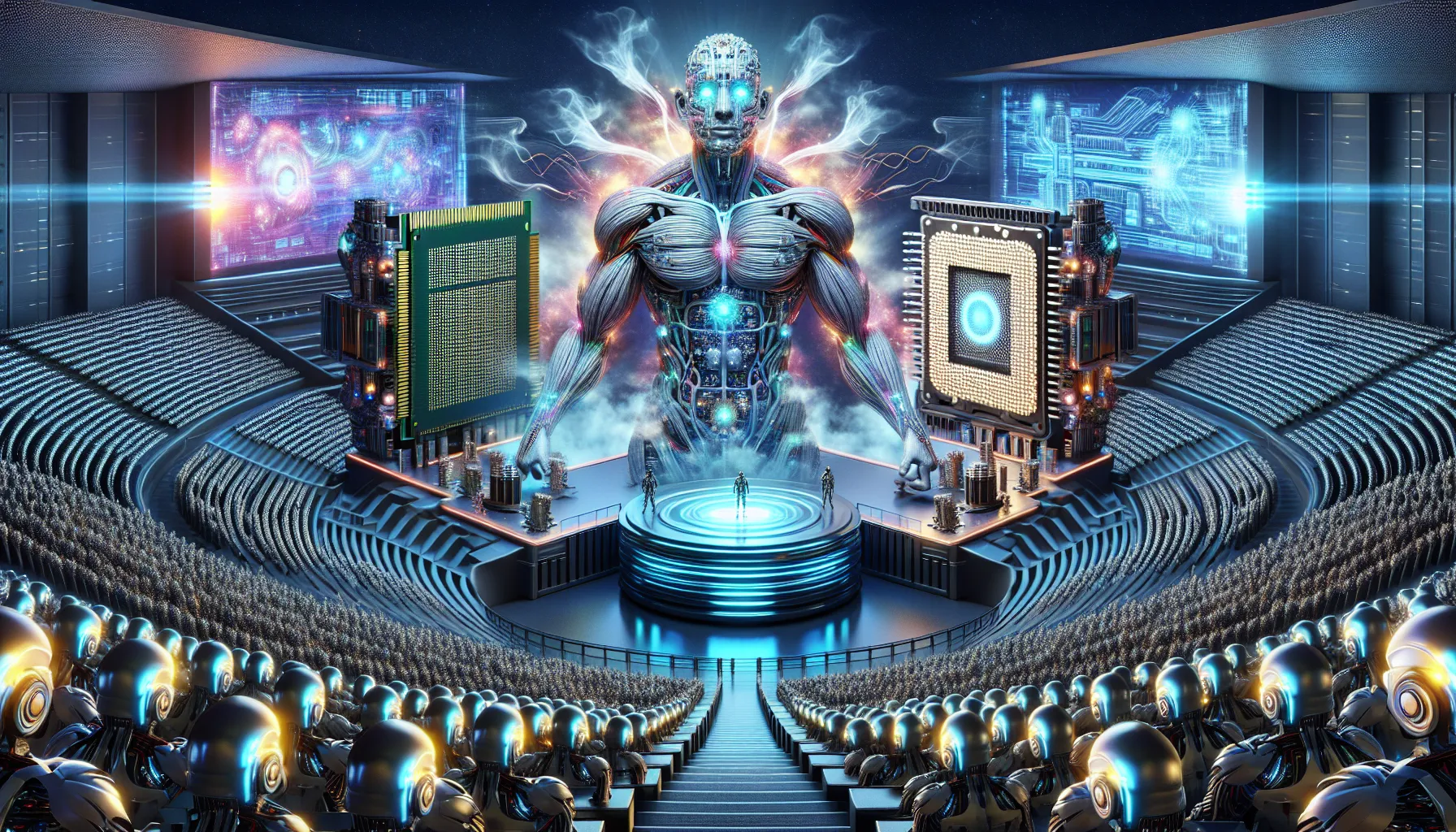About five years ago, I tried to upgrade my old clunky desktop. I vividly remember gazing at the inside of the case—cables everywhere, mysterious green boards, more dust than I care to admit. Each part looked baffling and strangely important. If you've ever felt the same, you're not alone! This guide is for anyone who’s strolled into the guts of a PC, only to wonder: what on earth does all this stuff actually do? Let’s pop open the case (metaphorically, I promise) and get acquainted with the true heroes powering your machine.
Meet the Cast: The Seven Vital Computer Hardware Components
If you’ve ever peeked inside your desktop or listened in on a tech support call, you’ve probably heard names like RAM, hard drive, or processor tossed around. But what do these Computer Hardware Components actually do? Let’s break down the seven essential Desktop Computer Parts Explained in simple terms—no tech degree required.
- Case: Think of the computer case as your PC’s sturdy house. It’s not just about looks or style. The case protects all the delicate parts inside and keeps everything organized. It also allows airflow, which is crucial for cooling systems—without it, your computer could overheat in no time.
- Power Supply: This is the unsung hero that delivers electricity to every part of your computer. Plug your PC in, and the power supply converts wall power into the right kind of energy for all your components.
- Motherboard: Here’s a fun fact: every desktop’s “soul” is its motherboard. Without it, you’d just have a box of electrical junk. The motherboard connects and organizes all the other parts, letting them communicate and work together. It’s the main circuit board—everything plugs into it.
- CPU (Central Processing Unit): The CPU is the “brain” of your computer. It processes instructions, manages data flow, and directly impacts how fast your computer can think and respond.
- RAM (Random Access Memory): RAM is your computer’s short-term memory. It temporarily stores data for quick access, helping your system multitask and run smoothly. More RAM usually means better performance, especially when juggling lots of programs.
- Hard Drive (or SSD): This is your computer’s long-term memory. Hard drives and solid-state drives (SSDs) store your files, programs, and operating system. SSDs are faster, but both serve the same basic function—keeping your data safe even when the power is off.
- Graphics Card (GPU): If you play games or use design software, the graphics card is your best friend. It renders images and videos, making visuals crisp and smooth. For many users, it’s the difference between basic computing and high-powered performance.
"A typical desktop computer comes down to these seven essential parts: case, power supply, motherboard, CPU, RAM, hard drive, and graphics cards."
While extras like Wi-Fi cards or RGB lights add flair, these seven Motherboard Components and Computer Case Functions are the true essentials. Understanding their roles can boost your confidence when troubleshooting or planning upgrades—research shows that knowing your hardware makes a big difference.

No Such Thing as ‘Just’ a Box: The Case, Power Supply, & Motherboard Demystified
Let’s start with something you might not expect: your computer case isn’t just a shell. It’s the first of many unsung heroes inside your machine. In fact, my first PC case was literally held together with duct tape—function before fashion! As one expert put it,
"The case is nothing more than a big hunk of plastic that houses everything else."But there’s more to these computer case components than meets the eye.
The case does more than just look good (or, in my early days, barely hold together). It keeps all your hardware organized, protected from dust, and safely tucked away from accidental bumps. Cases come in all shapes and sizes—tower, mini, or somewhere in between. Some offer extra room for upgrades, while others are compact for tight spaces. The main job? Give every part a home, keep things cool, and make sure everything stays in place.
Next up: the Power Supply Unit (PSU). Think of this as your computer’s lifeline. It’s almost always located at the bottom of the case, quietly converting wall electricity into the exact kind of power each component needs. Without a reliable PSU, nothing else works. Research shows that power supply units are essential for stable operation, distributing power to the motherboard, CPU, graphics card, and drives. If the PSU fails, your whole system can go down—so it’s not something to overlook.
Now, let’s talk about the Motherboard Overview. If the case is the house, the motherboard is the neighborhood grid. Every piece of your computer—CPU, RAM, storage, graphics card—plugs into the motherboard, each with its own “address” and job. The motherboard is a flat circuit board that connects everything else, making sure all the parts can talk to each other. It’s where you’ll find all the motherboard connections: slots for RAM, sockets for the CPU, ports for storage, and connectors for power. Studies indicate that the motherboard determines what upgrades you can make, thanks to its slots and connectors. Want to add more memory or a new graphics card? It all depends on your motherboard’s layout.
So, while it might seem like the case, power supply, and motherboard are just basic parts, they’re actually the backbone of your computer. Each one plays a unique role in keeping your system running smoothly and ready for whatever you throw at it.

Speed Demons and Vaults: CPU, RAM, and Hard Drive Showdown
Ever wondered what’s really happening inside your computer when you open a program or load a game? Let’s break down the functions of CPU and RAM, and how they work alongside your hard drive to keep everything running smoothly.
Think of your CPU—the Central Processing Unit—as your PC’s busy chef. It’s fast, efficient, and handles all the major tasks, but it doesn’t have much room to store ingredients. The CPU functions as the command center, processing data and instructions at lightning speed. But here’s the catch: it can only work with what’s right in front of it. That’s where RAM comes in.
RAM, or Random Access Memory, is often misunderstood. I’ll admit, I once thought RAM was just extra storage space—until I realized it’s more like your kitchen countertop. It’s where you keep everything you’re using right now, so you can grab it instantly. RAM and storage are not the same; RAM is for quick, temporary access, while your hard drive is for long-term, permanent storage.
Let’s use another analogy: your hard drive is the attic. It holds all your files, photos, and programs—everything you own. But rummaging through the attic can be slow, especially if it’s a traditional spinning disk drive. That’s why you sometimes see loading screens; your computer is pulling data out of storage and moving it to RAM, where the CPU can access it quickly.
- CPU Processing Data: The CPU runs all your programs but relies on RAM to keep things moving fast.
- RAM vs Hard Drive Storage: RAM is small but speedy, perfect for multitasking. Hard drives (or SSDs) are much larger but slower to access.
- Typical setup: A modern desktop might have 1,000 GB of hard drive storage but only 16 GB of RAM. That’s because you only need a little workspace for what you’re doing right now, but you need a big vault for everything you own.
"RAM sacrifices storage space for nearly instant accessibility."
Research shows that RAM is crucial for multitasking and program performance. The more RAM you have, the more apps and files you can juggle at once. Meanwhile, hard drives provide permanent, non-volatile storage for all your data, but they’re not built for speed. The CPU performs all major processing tasks but depends on rapid data access from RAM to keep up the pace.
So, next time you’re waiting for a game to load or a file to open, remember: your CPU, RAM, and hard drive are working together, each playing a unique role in your computer’s performance.

Pixels, Math, and Pure Magic: The Graphics Card (GPU)
If you’ve ever wondered how your computer transforms streams of numbers into stunning visuals, the answer lies in the Graphics Processing Unit (GPU). The graphics card role is nothing short of magical—turning raw data into the images, videos, and 3D worlds you see on your screen. While your motherboard can handle basic video output, it’s the dedicated GPU that truly brings your digital experiences to life, especially when it comes to gaming or creative work.
Think of the GPU as your computer’s artist-in-residence. It specializes in rendering images and handling complicated visuals, pixel by pixel. Whether you’re exploring a richly detailed game world or editing high-resolution photos, the GPU is working behind the scenes, calculating what each pixel should display at any given moment. Research shows that GPUs are vital for image rendering, 3D environments, and especially for the GPU role in gaming—where speed and detail matter most.
Here’s a wild card moment for the math lovers: the ‘fast inverse square root’ algorithm. This legendary bit of code, famous in 3D graphics history, allowed GPUs to perform complex lighting and shading calculations at lightning speed. It’s a perfect example of how mathematical wizardry powers the visuals you enjoy every day.
But why is a decent graphics card such a game-changer? For gamers, the answer is clear. The GPU in gaming determines how smooth and immersive your experience will be. High frame rates, realistic lighting, and detailed textures all depend on the graphics card’s muscle. For creative professionals—designers, video editors, animators—a powerful GPU means faster rendering, smoother previews, and the ability to handle complex projects without lag.
Motherboards alone simply can’t keep up with these demands. While they can output basic visuals, dedicated GPUs excel in performance, handling millions of calculations per second to ensure everything looks just right. As one expert puts it:
"Your graphics card is essentially an entire computer in and of itself, dedicated to the sole task of figuring out what pixels need to light up on your screen, in what color and at what time."
The graphics card is where the magic happens—converting streams of raw numbers and information into the visuals you see and play with. For anyone who values beautiful screens, fast gameplay, or seamless creative work, the Graphics Processing Unit is everything.
Bonus Round: Tiny Extras (and Why They Matter More Than You’d Think)
By now, you’ve met the seven core components inside your computer—each one a hero in its own right. But let’s take a quick tangent and shine a light on the “tiny extras” that often get overlooked. It’s easy to think of these as afterthoughts, but as you’ll see, they can make a bigger difference than you might expect.
First up: cooling systems. These are the unsung guardians of your PC. Without them, things get heated—literally. Fans and coolers work quietly in the background, making sure your CPU, GPU, and other components don’t overheat. While your computer might technically run without extra cooling, research shows that a well-designed cooling system is essential for long-term hardware health. Overheating can shorten the lifespan of your parts, cause random shutdowns, or even lead to permanent damage. I’ll admit, the first time I installed a cooling fan, I made the rookie mistake of using way too much thermal paste. Lesson learned: always read the instructions (and maybe watch a video or two).
Then there are the peripheral devices and internal upgrades—think Wi-Fi cards, Bluetooth adapters, or even a splash of RGB lighting. These aren’t strictly necessary for your computer to function, but they can totally change how you use your PC. A wireless card, for example, frees you from Ethernet cables and lets you set up your system wherever you want. Bluetooth lets you connect headphones or speakers without a tangle of wires. Even something as simple as extra USB ports or a better sound card can add comfort, capability, and sometimes a bit of style.
As the quote goes,
"There are other components worth mentioning such as cooling systems or internal wireless cards, but really those are extras."But don’t underestimate them. Customization often starts with these small upgrades. They might seem inconsequential at first, but over time, they shape your experience and open up new hardware upgrade paths that keep your computer feeling fresh and personal.
So, while the big seven components are the backbone of any system, these tiny extras are what turn a basic computer into your computer. Whether you’re chasing performance, comfort, or just a little extra flair, don’t overlook the power of the “extras.” Sometimes, it’s the little things that matter most.
TL;DR: Your computer is a team of seven essential players—the case, power supply, motherboard, CPU, RAM, hard drive, and graphics card. Each has a unique job, from storing your cat photos to crunching complex data in the blink of an eye. Understanding how they all work together isn’t just satisfying—it’s the first step to mastering your tech (or at least impressing your friends).



